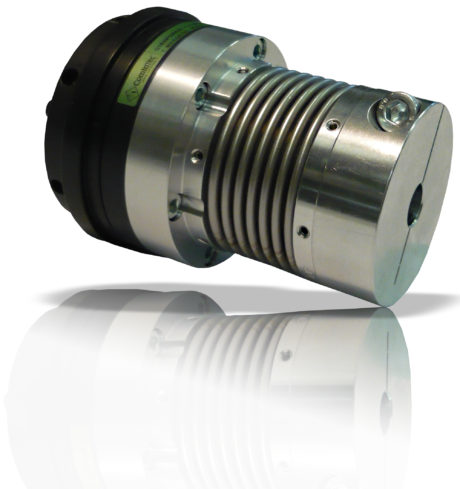Automatic machine manufacturers are always looking to ensure safety to reduce damage due to accidental collisions, which involve machine stops, replacement of damaged parts and operating costs, with inevitable production losses for the user. ComInTec, manufacturer of mechanical torque limiters, has always been attentive to these needs, to ensure maximum production efficiency to the customer. The mechanical torque limiter or safety coupling, is designed to safeguard the main components of a machine. It is a simple, easily adjustable and easily adaptable to the different needs of the system, allowing the immediate disengagement of the transmission between the driving and driven in case of a sudden peak torque. The reaction time is reduced by about 1/3 compared to an electronic system, obtaining as a side benefit a reduced impact force in case high speeds and inertias involved.
The mechanical torque limiter or safety coupling, is designed to safeguard the main components of a machine. It is a simple, easily adjustable and easily adaptable to the different needs of the system, allowing the immediate disengagement of the transmission between the driving and driven in case of a sudden peak torque. The reaction time is reduced by about 1/3 compared to an electronic system, obtaining as a side benefit a reduced impact force in case high speeds and inertias involved.
The electronic devices are often integrated in the electric motor, where they monitor the functional parameters, they are often considered a ‘low-cost option for the management of the plant safety. This system, however, involves a less immediate reaction with respect to the mechanical device, because the monitoring circuit in the event of anomaly at first will send a signal to the controller, that will try to increase the available torque, up to the achievement of a maximum threshold value, beyond which, will give the command to stop the transmission.
Another disadvantage of the electronic system is the number of sensors and other devices for the detection and monitoring of the torque in the different areas. All this involves additional management and maintenance costs, with a possible increase of possible failures, alteration, and even errors in the management of the signals of whole monitoring system.
In conclusion a mechanical torque limiter is easy to apply, ready for use and maintenance-free. The ComInTec safety couplings, designed with modern engineering methods, offer definite advantages in a wide range of applications ensuring high sensitivity, repeatability and reliability. They are therefore essential mechanical components within the drive train in order to greatly increase the level of safety of the machine as required by regulations EN ISO 13849-1 (“Safety of control systems”) to which all designers have to follow in the field of machine safety in the process of risk assessment in order to respect the safety, preventing breakage of mechanical parts.



